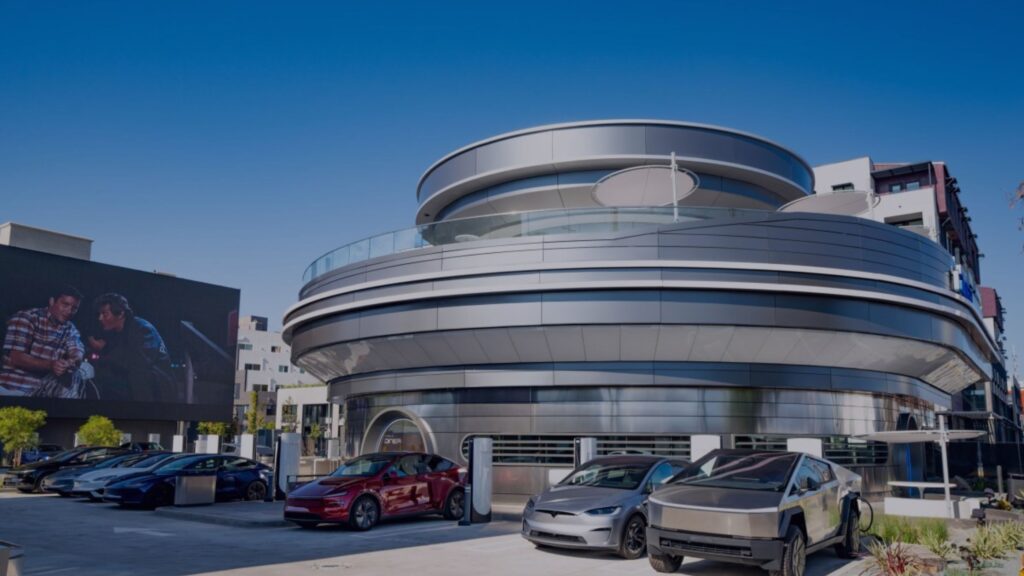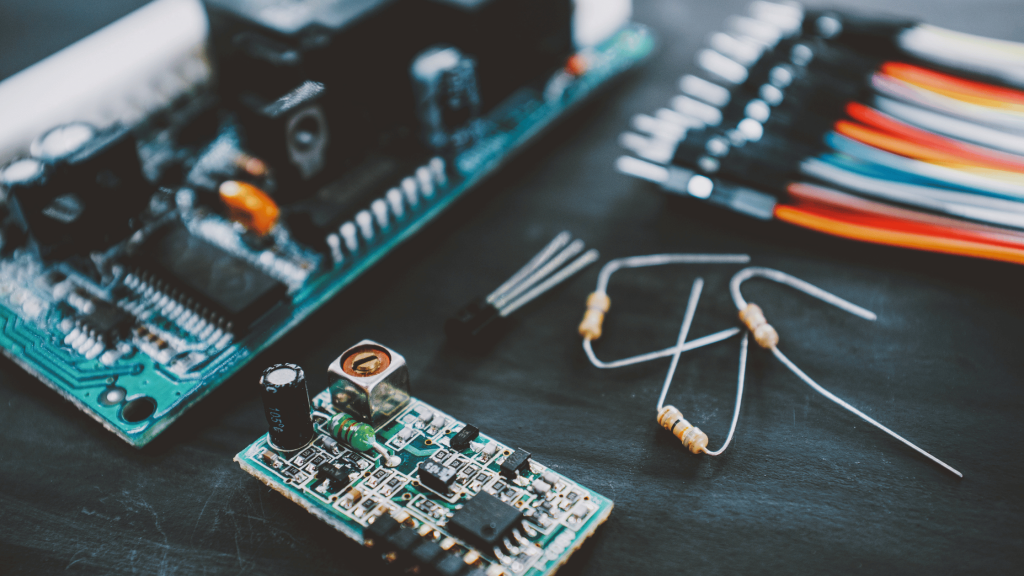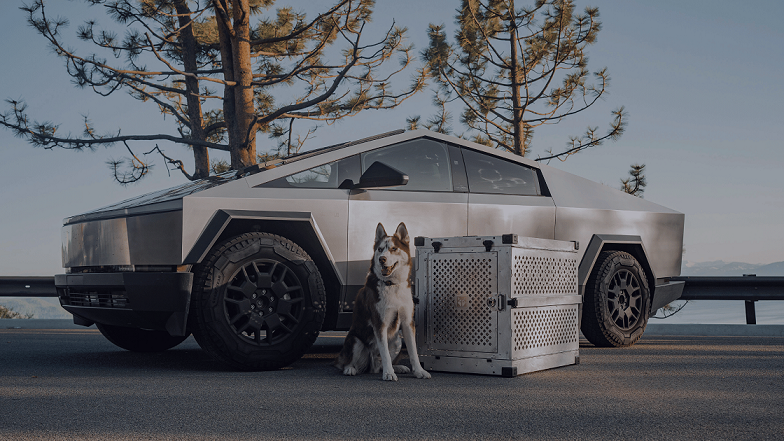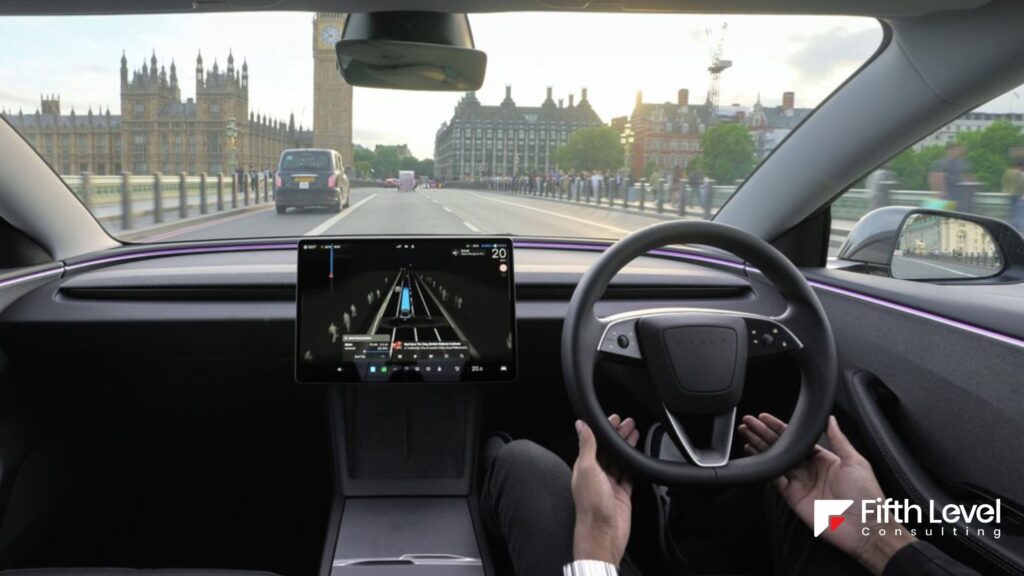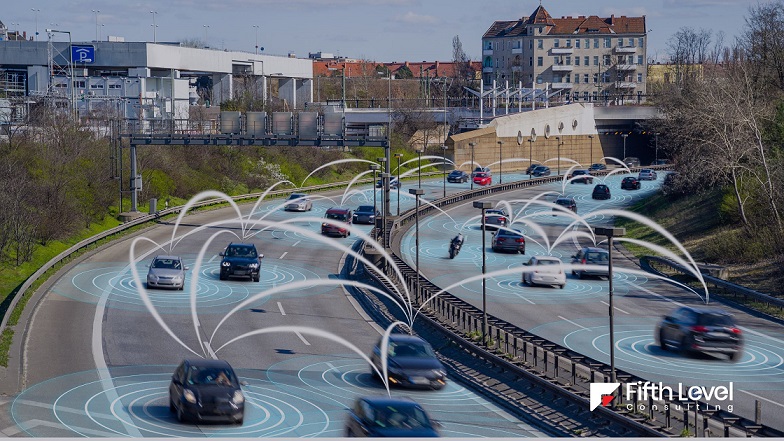Table of Contents
Key Points
• Tesla’s 9,300-square-foot diner opened in Hollywood, Los Angeles on July 21, 2025, after seven years of development.
• The facility combines 30+ V4 Supercharger stations with a two-story restaurant and drive-in theater.
• Mixed customer reviews highlight innovative concept but point to operational challenges and pricing concerns.
• Tesla positions this as the “restaurant of the future” with plans for global expansion
After seven years of anticipation and countless social media teasers, Tesla’s vision of combining electric vehicle charging with dining and entertainment has finally materialized. Tesla has opened its first Diner Supercharger station in Los Angeles, bringing a long-teased vision from Elon Musk to life, officially welcoming customers on July 21, 2025.
Observers say the Tesla Diner represents Elon Musk’s bold attempt to reimagine the roadside dining experience for the electric age. Located in the heart of Hollywood on Santa Monica Boulevard, this retro-futuristic establishment promises to solve one of electric vehicle ownership’s most persistent challenges: making charging time enjoyable rather than tedious.
But does this ambitious concept deliver on its promises, or is it simply another example of Tesla’s tendency to overpromise and underdeliver? The early reviews paint a complex picture of innovation marred by execution challenges.
Tesla: The Company Behind the Vision
Tesla’s Track Record of Innovation
Tesla has consistently positioned itself as more than just an automotive company. Since its founding in 2003, the company has expanded from electric vehicles into energy storage, solar panels, and now hospitality. Under Elon Musk’s leadership, Tesla has achieved several groundbreaking milestones.
Key Tesla Achievements:
• Market capitalization exceeding $800 billion at its peak
• Produced over 6 million EVs, including the Model S, Model 3, Model X, Model Y, and Cybertruck.
• Operation of more than 50,000 Supercharger stations globally
• Industry-leading battery technology and autonomous driving capabilities
• Successful ventures into space technology through SpaceX integration
The Philosophy Behind Tesla’s Expansion
Tesla’s expansion into dining reflects Musk’s broader philosophy of multiple customer experiences. He recently said on X (formerly Twitter) that “Tesla aimed to open up other diners in ‘major cities around the world,’ and that the company’s Optimus robots would be serving” customers in future locations.
This ambitious vision aligns with Tesla’s mission to accelerate the world’s transition to sustainable energy by making electric vehicle ownership more convenient and appealing
The Tesla Diner Design
Designed by Tesla’s lead designer Franz von Holzhausen, the diner features sleek, curved edges, neon signs, and a rooftop patio overlooking two 45-foot drive-in movie screens. It’s the largest urban Supercharger hub in the world, with 80 V4 Supercharger stalls, catering to Tesla owners while welcoming curious tourists. The interior, inspired by “The Jetsons,” showcases Tesla’s Optimus humanoid robot prototypes, adding a sci-fi touch to the vibe.
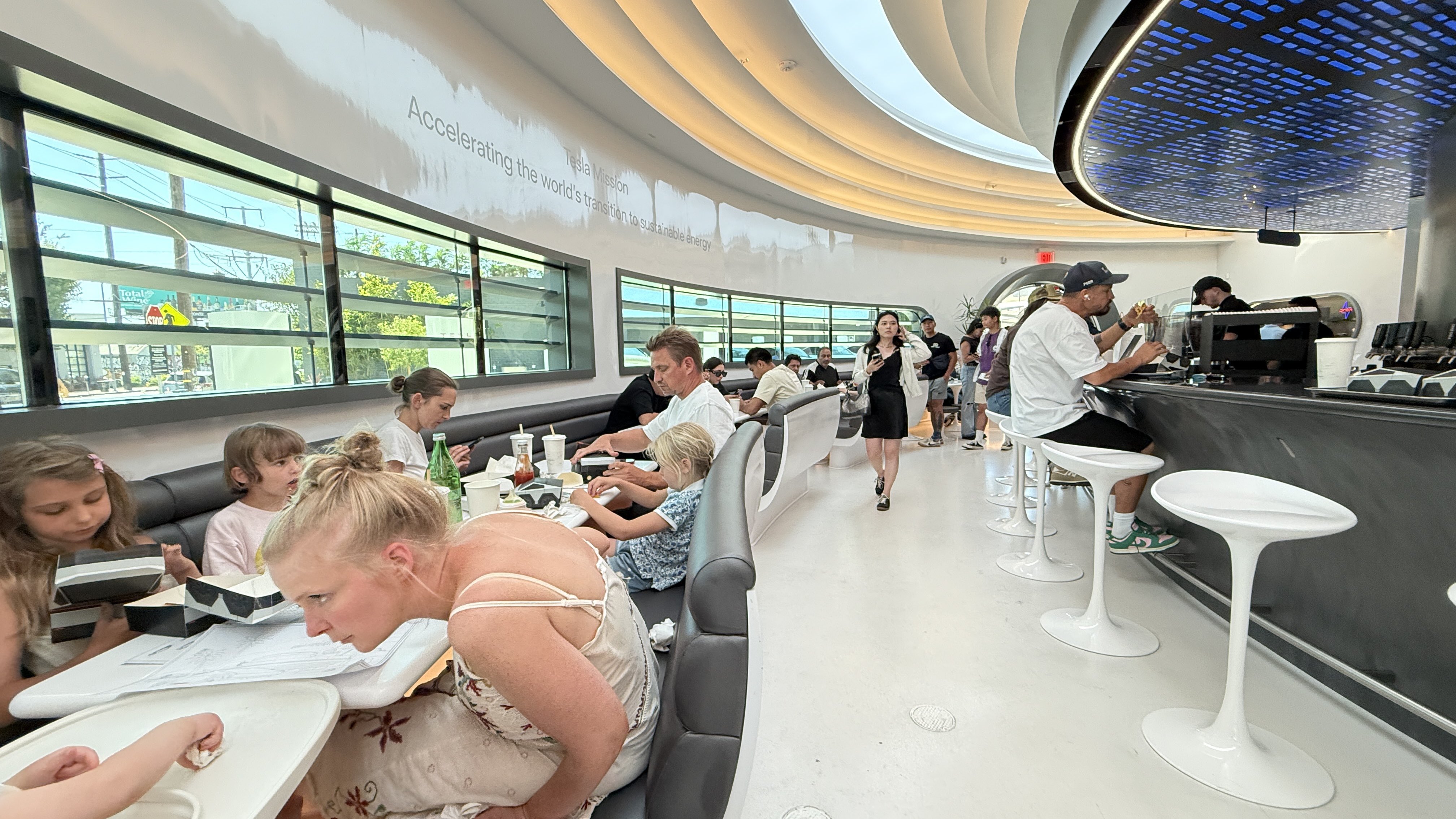
Additional Design Elements
• Two large movie screens visible from the parking lot
• Rooftop outdoor seating area with panoramic city views
• Ground floor housing kitchen, bar, and primary dining area
• Second-story rooftop area with additional bar service
The Multi-Purpose Experience
The Tesla Diner is the first “entertainment center” featuring a diner and drive-in theater, plus a Supercharging station in the U.S. The concept addresses a fundamental challenge in electric vehicle adoption: range anxiety and charging downtime. By transforming necessary charging stops into entertainment experiences, Tesla aims to shift customer perception from inconvenience to opportunity.
The Tesla Diner Menu
Curated by Le Cordon Bleu graduate and celebrity chef Eric Greenspan, the menu offers classic diner fare available 24/7:
- Entrées ($9–$15): Smash burgers, hot dogs, tuna melts, chicken and waffles, and club sandwiches.
- Sides ($4–$12): Tallow fries, wagyu chili, and “Epic Bacon” (now removed from the menu).
- Breakfast Options: Tacos, avocado toast, biscuits and gravy, and cinnamon rolls.
- Drinks ($4+): Milkshakes, coffee, and fountain drinks, with no alcohol served.
The food is served in Cybertruck-shaped boxes, a playful nod to Tesla’s branding. Prices are comparable to nearby Astro Burger, established in 1972, but some critics argue the quality doesn’t match the cost. For example, a $13.50 Tesla Burger has been compared to a cheaper Shake Shack double patty.
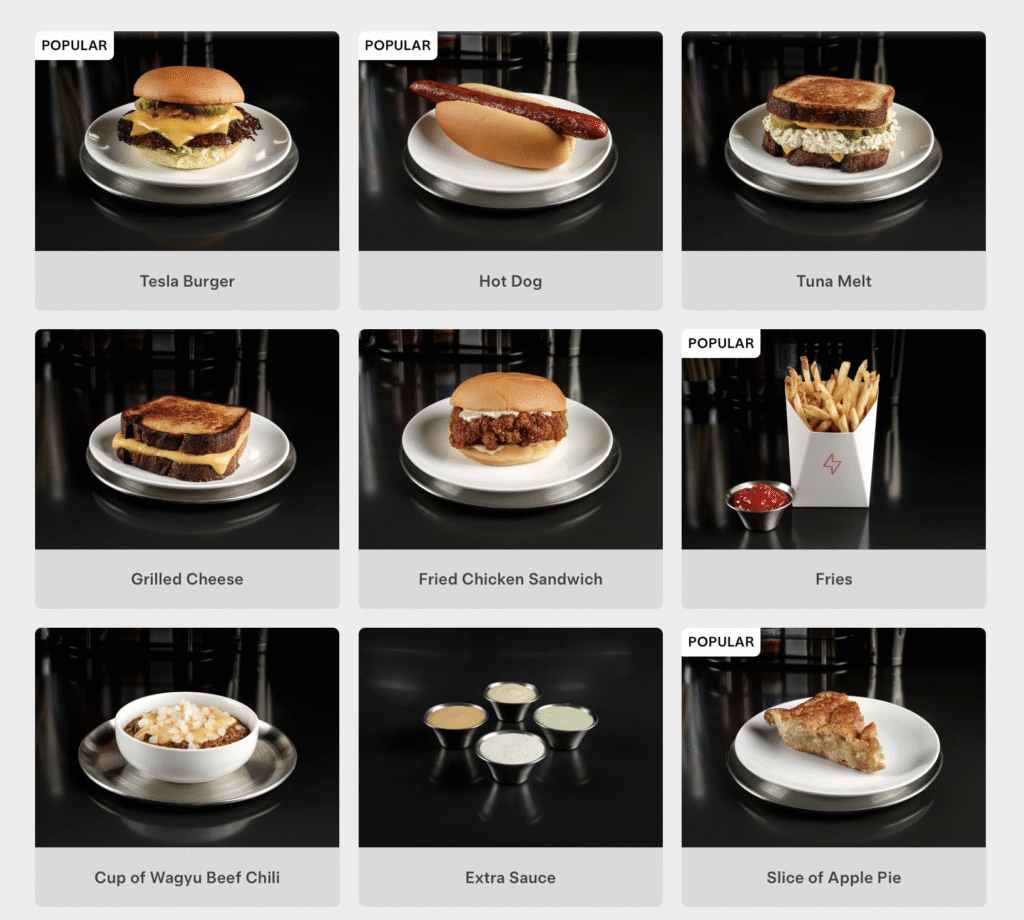
Opening Day Buzz
The diner’s grand opening drew thousands, with Tesla vehicles lining Santa Monica Boulevard and crowds circling the block. Despite Tesla’s reported revenue decline of 7% year-over-year in Q2 2025, the diner’s launch was a media spectacle, amplified by Elon Musk’s claim on X that it’s “one of the coolest spots in LA!”
Charging Infrastructure and Technology
Supercharger Specifications
The building is surrounded on two sides by 30 V4 Supercharger stations, representing Tesla’s latest charging technology. These V4 Superchargers offer:
• Up to 250kW charging speeds for compatible vehicles
• Enhanced cable management for improved user experience
• Credit card payment options for non-Tesla vehicles
• Integration with Tesla’s mobile app for seamless charging initiation
Strategic Location Benefits
The Hollywood location serves multiple strategic purposes:
• High-traffic area ensuring consistent customer flow
• Tourist destination appealing to Tesla enthusiasts globally
• Central Los Angeles location addressing urban charging needs
• Visibility that reinforces Tesla’s brand presence

The Diner Experience: Hits and Misses
The Hits: Food and Ambiance
For many, the Tesla Diner delivers a unique experience. Yelp reviews, averaging 4.5 stars from 14 posts after one week, praise the food’s quality.
- A five-star review raved, “Burger patty super crunchy outside and juicy on the inside middle.”
- A TikTok user gave the spicy chicken sandwich a “10 out of 10” and called the tuna melt a “sleeper hit.”
- CNBC reported, “Good burger. Nice char & patty. Like the bun too. First impressions is the food is pretty good.”
The retro-futuristic vibe, complete with roller-skating carhops and sci-fi movie screenings, resonates with Tesla fans and tourists. The diner’s 80 Superchargers make it a practical stop for EV owners, syncing movie audio to Tesla vehicles for an immersive experience.
The Misses: Logistical Nightmares
Despite the enthusiasm, the diner has faced significant challenges:
- Long Wait Times: Lines stretched around the block, with some waiting up to five hours. One TikTok user called it “the worst food experience I’ve had in LA.”
- App Glitches: The Tesla app, meant to allow in-car ordering, frequently failed, forcing drivers to join walk-up lines.
- Limited Bathrooms: With only five single-occupant bathrooms for 250+ patrons, long lines formed, exacerbated by app-locked exterior restrooms.
- Service Chaos: Opening week saw a hectic kitchen, missing menu items, and non-functional carhop delivery.
“The overall vibe was total chaos,” a Fast Company review noted, highlighting the diner’s struggle to manage crowds.
Review Controversies
Yelp temporarily disabled new reviews after 23 disappeared, leaving only 14, with just one one-star review remaining. Critics speculate Tesla’s advertising package with Yelp influenced moderation, a claim supported by industry practices where paid partnerships affect review visibility. This has sparked debates about the diner’s true reception.
Significance of the Tesla Diner
The Tesla Diner is a strategic move to diversify Tesla’s revenue amid declining car sales. With EV deliveries down 7% in Q2 2025, the diner taps into the $600 billion U.S. restaurant industry. Early reports suggest it generated $47,000 in sales within six hours of opening, 30% higher than a nearby McDonald’s daily sales.
The diner reimagines the traditional truck stop for the EV era, offering a place to charge, eat, and socialize. With 80 Superchargers, it addresses the growing demand for urban charging infrastructure, where EV adoption has risen 40% in Los Angeles since 2020. It’s a proof-of-concept for future locations, with Musk hinting at global expansion if successful.
The diner doubles as a viral marketing tool, drawing Tesla fans and curious onlookers. Its Cybertruck-shaped boxes and Optimus displays reinforce brand loyalty, while the drive-in screens showcase Tesla ads and SpaceX launches. Despite mixed reviews, the diner’s social media buzz—amplified by TikTok and X—ensures it remains a tourist magnet.
“The Tesla Diner is whatever you make it out to be, and I’m not sure the quality of food even matters much,” an InsideEVs reviewer reflected, emphasizing its experiential appeal.
Critical Reception and Public Sentiment
Media Reviews
Media outlets offer a mixed verdict:
- Business Insider: “Exceeded expectations” despite a hectic kitchen and long waits.
- MotorTrend: Praised the design but criticized food quality and logistics, calling it “crazy enough to work.”
- Rolling Stone: Gave it an “F,” slamming the “disappointing food” and “ill-considered design.”
- The New York Times: Called it a “smash burger and content machine,” noting its appeal to Musk’s fans despite Tesla’s challenges.
Social Media Sentiment
X posts reflect polarized views:
- Positive: “The Tesla Diner is a massive success. The lines are still around the building,” posted by @niccruzpatane.
- Negative: “Tried the new Tesla Diner and it was hands down the worst food experience I’ve had in LA,” a TikTok user shared.
The Verdict
The Tesla Diner is a bold experiment that’s both a hit and a miss. It succeeds as a branding exercise and a novel charging hub, drawing crowds with its unique vibe. However, logistical hiccups and inconsistent food quality hinder its potential as a true diner. As one reviewer put it, “I don’t own a Tesla, and chili cheese fries aren’t part of my daily diet. But I admit I was smiling as I left.”
Looking Ahead: The Future of the Tesla Diner
If Tesla resolves early kinks, the diner could become a blueprint for a global chain, blending charging stations with dining. Musk’s vision of “more diners in major cities” hinges on streamlining operations and improving food consistency.
The Tesla diner, however, has sparked local outcry, with some Angelenos opposing Musk’s presence. A protester declared, “We will do everything in our power to get him to sell this place and get out of here.” Yet, its role as a charging hub could boost EV adoption in Los Angeles, where 25% of new car sales are electric.
Whether a fleeting gimmick or a lasting innovation, the Tesla Diner surely captures attention. Its success will depend on balancing practicality with the allure of Tesla’s brand.
Do you own a Tesla or are you just a curious foodie? It’s worth a visit to decide for yourself: hit or miss?
You May Also Like:

I’m Dr. Brandial Bright, also known as the AVangelist. As a dedicated and passionate researcher in autonomous and electric vehicles (AVs and EVs), my mission is to educate and raise awareness within the automotive industry. As the Founder and Managing Partner of Fifth Level Consulting, I promote the adoption and innovation of advanced vehicle technologies through speaking engagements, consulting, and research as we progress to level 5 fully autonomous vehicles.

